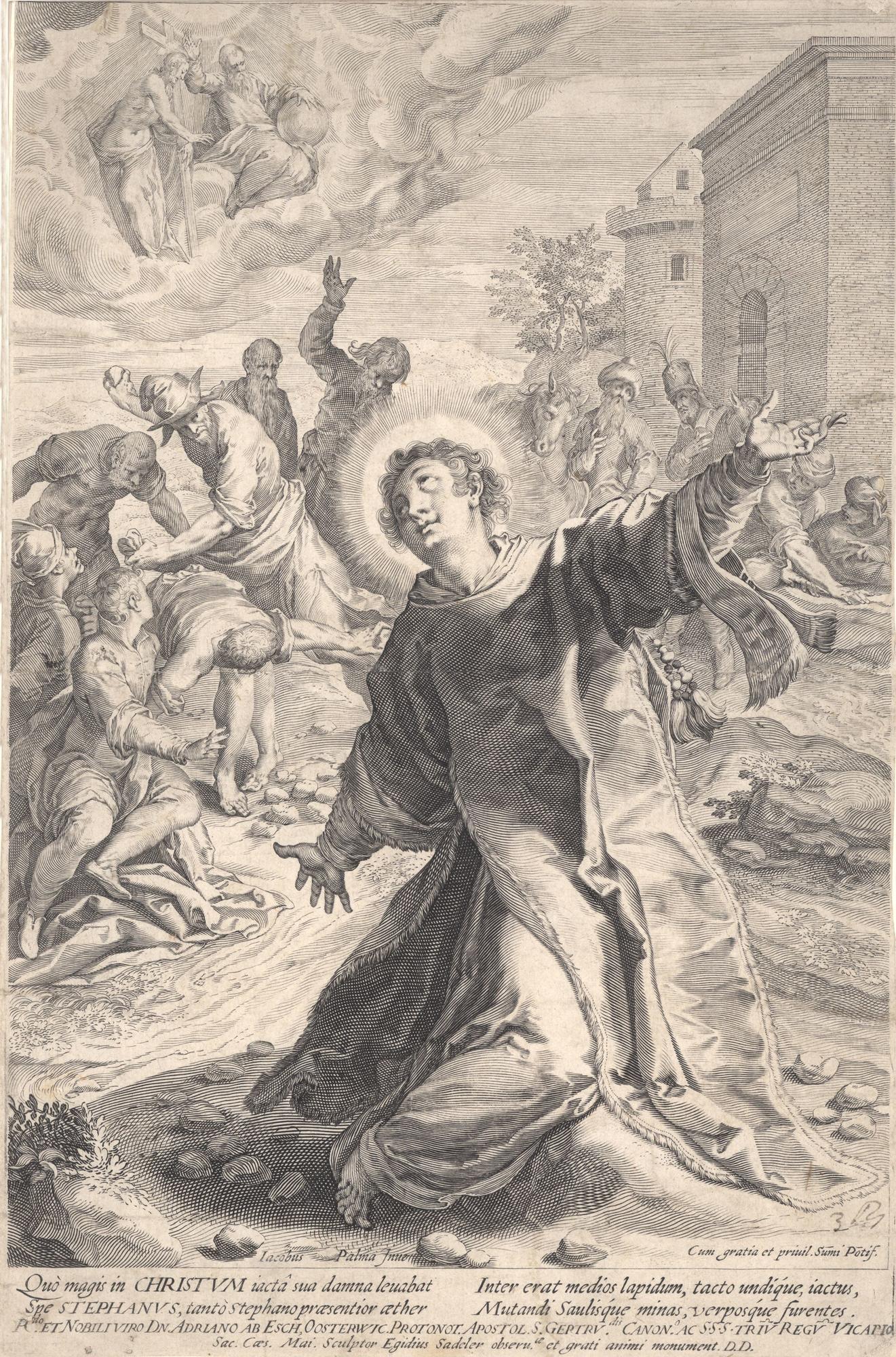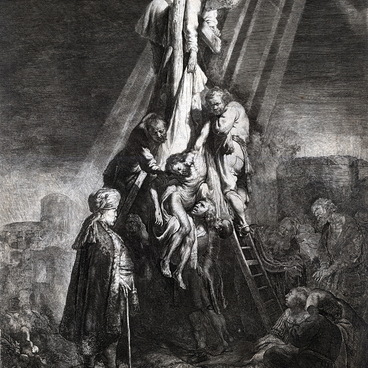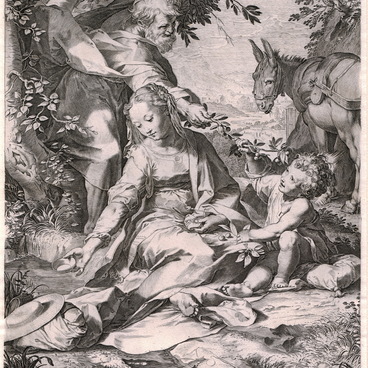The etching ‘Lapidation of St. Stephen’ was created by the Flemish engraver Aegidius Sadeler II based on the original painting by Jacopo Palma Jr. The subject first appeared in ‘The Acts of the Apostles’ of the New Testament.
Lapidation of St. Stephen
Creation period
1593
Dimensions
37,9x25 cm
Technique
paper, etching, sheet one of three
Collection
2
Open in app#1

Aegidius Sadeler II
Lapidation of St. Stephen
#2
#6
Around 33-36 A.D., the young Christian church started to rapidly grow, and care had to be taken of poor members of the community. In this context, a conflict was escalating between the Jews of the Jerusalem indigenous community and the Hellenists, i.e. Jews who were born outside of the Holy Land and returned to Jerusalem. To keep law and order, the Apostles selected seven officials, the Seven Deacons. The first of them was a young Hellenist Stephen. He helped the Community and also preached in Jerusalem and made glorious wonders and bodings among the people. Once he was brought in front of Synedrion for blasphemy and criticism of temple worshipping. Stephen was arrested, brought out of the city and lapidated. Relevant sources do not specify whether that was an official capital punishment by lapidation, or the Deacon was killed by the vengeful crowd. Stephen was the first Christian martyr of the Jewish community.
Traditionally St. Stephen is represented as a young beardless man with a stone on his head or shoulders. He is holding a palm branch as a symbol of victory in the battle for faith and the defeat of death. In the Sadeler’s etching St. Stephen openly accepts the blows of the crowd and lifts his eyes praying for his murderers.
Traditionally St. Stephen is represented as a young beardless man with a stone on his head or shoulders. He is holding a palm branch as a symbol of victory in the battle for faith and the defeat of death. In the Sadeler’s etching St. Stephen openly accepts the blows of the crowd and lifts his eyes praying for his murderers.
#4
The Sadelers were a dynasty of engravers, artists and publishers from Antwerp. Jan Sadeler I, the dynasty founder, started with carving ornaments on weapon in his father’s workshop. In Amsterdam he created a few etchings and then devoted himself entirely to graphic arts. His younger brother and disciple Raphael I accompanied him in his trips around Europe and made his etchings based on German painting originals.
Little is known of the second brother, Aegidius I. Most probably he just was engaged in printing and selling works by Jan and Raphael. However, his son Aegidius II surpassed both elder Sadelers in his ability of the hand and fineness of the stroke. In 1597 he became an Emperor Rudolph II court resident graphic artist and worked in Prague until he died. Aegidius was very good at portraits and landscapes: he adapted his technique to the subject and could equally well make smooth thin strokes and rough wide strokes. In Prague Sadeler made etchings based on original paintings by court artists and Renaissance masters, on drawings by Durer from the collection of Rudolph II, he also created portrait etchings based on his own drawings. The only painting by Aegidius, ‘Martyrdom of St. Sebastian’, survived in Vienna.
Little is known of the second brother, Aegidius I. Most probably he just was engaged in printing and selling works by Jan and Raphael. However, his son Aegidius II surpassed both elder Sadelers in his ability of the hand and fineness of the stroke. In 1597 he became an Emperor Rudolph II court resident graphic artist and worked in Prague until he died. Aegidius was very good at portraits and landscapes: he adapted his technique to the subject and could equally well make smooth thin strokes and rough wide strokes. In Prague Sadeler made etchings based on original paintings by court artists and Renaissance masters, on drawings by Durer from the collection of Rudolph II, he also created portrait etchings based on his own drawings. The only painting by Aegidius, ‘Martyrdom of St. Sebastian’, survived in Vienna.
#7
The Irbit State Museum of Fine Arts
read morehide
00:00
00:00
1x
Lapidation of St. Stephen
Creation period
1593
Dimensions
37,9x25 cm
Technique
paper, etching, sheet one of three
Collection
2
Open in app
Share


